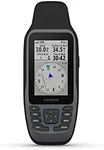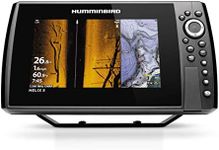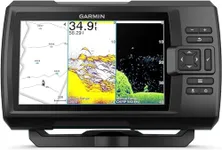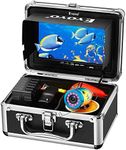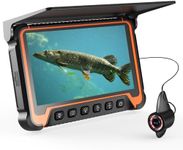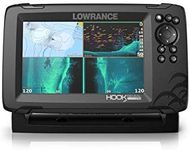Buying Guide for the Best Handheld Fishing Gps
Choosing the right handheld fishing GPS can significantly enhance your fishing experience by helping you navigate waters, mark fishing spots, and track your journey. To make an informed decision, it's important to understand the key specifications and how they align with your specific needs. Here are the essential specs to consider when selecting a handheld fishing GPS.Display Size and ResolutionThe display size and resolution determine how easily you can read the information on your GPS device. A larger display with higher resolution provides clearer and more detailed maps, which is crucial when navigating waters and identifying fishing spots. If you often fish in bright sunlight, look for a screen that is readable in direct sunlight. For those who prefer compact devices, a smaller screen might be more convenient, but ensure the resolution is still adequate for clear visibility.
Waterproof RatingThe waterproof rating indicates how well the GPS device can withstand exposure to water. This is particularly important for fishing, where the device is likely to get wet. Look for devices with at least an IPX7 rating, which means the device can be submerged in water up to 1 meter for 30 minutes. If you fish in harsh weather conditions or are prone to dropping things in the water, a higher waterproof rating will provide extra peace of mind.
Battery LifeBattery life determines how long the GPS device can operate before needing a recharge or battery replacement. Longer battery life is essential for extended fishing trips, especially if you are in remote areas without access to power. Devices with replaceable batteries can be a good option for longer trips, as you can carry spare batteries. For shorter, day-long trips, a device with a rechargeable battery and moderate battery life may suffice.
Mapping and Charting CapabilitiesMapping and charting capabilities refer to the types of maps and charts the GPS device can display. High-quality maps with detailed topography and waterway information are crucial for identifying fishing spots and navigating unfamiliar waters. Some devices come preloaded with maps, while others allow you to download additional maps. Consider your fishing locations and ensure the device supports the maps you need. Advanced features like depth contours and fish finders can also be beneficial.
Waypoint and Route ManagementWaypoint and route management features allow you to mark specific locations and create routes to follow. This is useful for marking fishing spots, launch points, and other important locations. The number of waypoints and routes a device can store varies, so consider how many locations you typically mark on a trip. If you fish in multiple locations or have a complex route, look for a device with ample waypoint and route storage.
Durability and Build QualityDurability and build quality are important for ensuring the GPS device can withstand the rigors of fishing. Look for devices with rugged construction, shock resistance, and materials that can handle exposure to the elements. A durable device will last longer and provide reliable performance in various fishing conditions. If you fish in rough environments or are prone to dropping your gear, prioritize a device with high durability.
User Interface and Ease of UseThe user interface and ease of use determine how intuitive and straightforward the GPS device is to operate. A user-friendly interface with simple menus and controls is important for quickly accessing information and making adjustments on the go. Touchscreen interfaces can be convenient, but ensure they are responsive and work well in wet conditions. If you are not tech-savvy, look for devices with clear instructions and minimal setup requirements.







